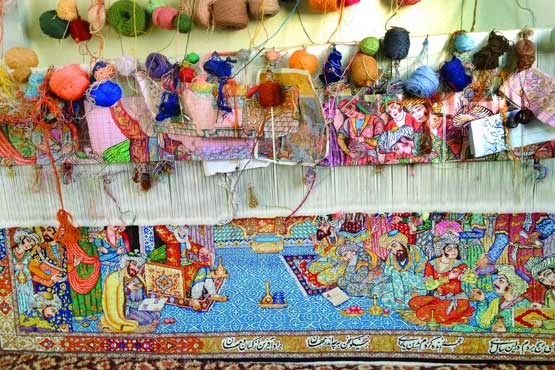The Rich Heritage of Persian Tribal Carpets
Persian tribal carpets are renowned for their rich history, intricate designs, and exceptional craftsmanship.
These carpets are crafted by nomadic tribes who have preserved their weaving traditions for centuries. Among these tribes, the Lors and Bakhtiars stand out for their distinctive styles and vibrant cultural expressions. Located in the Zagros Mountains north of the Fars region, these tribes create unique rugs that reflect their heritage, lifestyle, and artistic ingenuity.
The Lors and Bakhtiars: Masters of Tribal Weaving
The Lors and Bakhtiars are two prominent Persian tribes known for their exceptional weaving skills. Their carpets are not just floor coverings but pieces of art that tell stories of their creators’ lives, beliefs, and surroundings.
- Lors: The Lors, one of the oldest Persian tribes, are known for their robust, colourful, and geometric designs. Their carpets often feature symbolic motifs, representing their environment and daily life.
- Bakhtiars: The Bakhtiars are famous for their intricate patterns and vibrant colour schemes. Their rugs often incorporate floral and garden motifs, symbolizing their connection to nature.
Distinctive Features and Styles
Persian tribal carpets from the Fars region are characterized by their bold geometric designs and vibrant colours. These rugs are a testament to the creativity and resourcefulness of the weavers, who use natural dyes and locally sourced materials to create their masterpieces.
- Geometric Patterns: The geometric designs are a hallmark of Fars region carpets. These patterns include various shapes such as diamonds, hexagons, and stars, often filled with smaller motifs and symbols.
- Vivid Colours: The use of bright, bold colours is another distinctive feature. Natural dyes extracted from plants, insects, and minerals are used to achieve these vibrant hues, which include reds, blues, greens, and yellows.
- Pictorial Rugs: Some rugs from this region depict pictorial scenes, such as lions honouring tribal leaders. These rugs are particularly prized for their artistic and cultural significance.
Materials and Expertise
The quality of Persian tribal carpets is a result of meticulous craftsmanship and the use of high-quality materials. The weaving process involves several key components:
- Warp: The warp, the foundation threads that run the length of the rug, is typically made of wool. This provides a strong and flexible base for the intricate designs.
- Weft: The weft threads, which run horizontally across the rug, can be made of either wool or cotton. These threads are interwoven with the warp to create the rug’s structure.
- Pile: The pile, or the surface layer of the rug, is made of wool. This material is chosen for its durability, softness, and ability to absorb dyes well.
Cultural Significance
Persian tribal carpets are more than just decorative items; they are cultural artifacts that encapsulate the traditions and stories of the tribes. Each carpet is unique, reflecting the individual weaver’s creativity and the collective heritage of their tribe.
- Storytelling: The motifs and patterns in these rugs often tell stories or convey messages. They can represent everything from daily life and natural surroundings to spiritual beliefs and historical events.
- Symbolism: Many designs are symbolic, with each motif carrying specific meanings. For example, animals like lions may symbolize strength and leadership, while floral patterns might represent fertility and growth.
Preservation and Appreciation
Preserving the tradition of Persian tribal carpet weaving is crucial for maintaining the cultural heritage of these tribes. Modern appreciation for these rugs extends beyond their aesthetic appeal to their historical and cultural significance. Collectors and enthusiasts around the world value Persian tribal carpets not only for their beauty but also for the rich stories they tell.
Persian tribal carpets from the Lors and Bakhtiars tribes are a testament to the enduring artistry and cultural heritage of these nomadic weavers. With their vibrant colours, intricate designs, and symbolic motifs, these rugs are cherished worldwide as both functional items and works of art. By appreciating and preserving these exquisite pieces, we honour the skilled artisans who continue to keep this ancient tradition alive.

